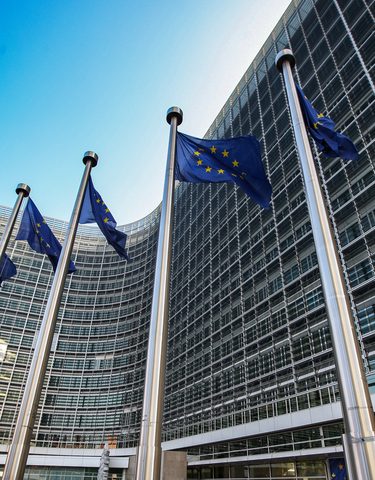The European Union has approved Celltrion Healthcare’s biosimilar Truxima to treat the same conditions as rituximab, the therapy on which Truxima is based.
The European Commission’s sign-off means Truxima (CT-P10) can be used for non-Hodgkin’s lymphoma, chronic lymphocytic leukemia, rheumatoid arthritis, granulomatosis with polyangiitis, and microscopic polyangiitis. Europe’s announcement makes Truxima the first biosimilar monoclonal antibody (mAb) to obtain worldwide approval.
Roche sells rituximab, an anti-CD20 compound, as Rituxan in the United States and MabThera in Europe.
“We are excited to offer the first biosimilar mAb in oncology. With our partners across Europe, we will work together to ensure that Truxima is available to the many patients who can benefit from this treatment,” Jung-Jin Seo, chairman of Celltrion Group, said in a news release. “For healthcare systems burdened with high-cost oncology treatments, we are pleased to provide an option that has the potential to offer significant savings whilst ensuring patients retain access to high-quality and effective treatments.”
The approval was based on clinical evidence that Celltrion submitted to the European Medicines Agency’s (EMA) Committee for Medicinal Products for Human Use (CHMP). The data demonstrated that Truxima offered the same safety, effectiveness, immunogenicity, pharmacodynamics, and pharmacokinetics as rituximab in more than 600 patients with rheumatoid arthritis and advanced follicular lymphoma. Patients were followed for up to 104 weeks.
Truxima’s biosimilarity to rituximab continues to be evaluated in two ongoing Phase 3 clinical trials. One trial, NCT02260804, deals with patients who have low tumor burden follicular lymphoma. The other, NCT02162771), involves patients with advanced follicular lymphoma — that is, stages 3 and 4.
“Biosimilar rituximab has been shown to have comparable efficacy and safety to reference rituximab in a large program of trials providing convincing evidence for the similarity of the two products. This has been recognised by the regulatory authorities, and hopefully this will pave the way for further innovation in this area,” said Bertrand Coiffier, head of the department of Hematology at Hospices Civils de Lyon in France and a professor at the University Claude Bernard.
Biosimilars are biological products based on an established treatment. To obtain regulatory approval, a biosimilar must be shown to be as safe and effective as the product it mimicks, plus more affordable and accessible.
“Assuming the price of biosimilar rituximab is 70% compared to reference rituximab, and the market share of biosimilar rituximab is 30% (first year), 40% (second year) and 50% (third year), over this three-year time period the budget savings across the 28 countries of the European Union would be around €570 million,” said Professor László Gulácsi, who heads the Department of Health Economics at Corvinus University in Budapest and HTA Consulting Budapest. “This equates to 49,000 new rheumatoid arthritis, non-Hodgkin’s lymphoma and chronic lymphocytic leukemia patients who could be receiving life-changing treatment, which is clearly a huge aggregate health gain at both a national and European Union level.”


